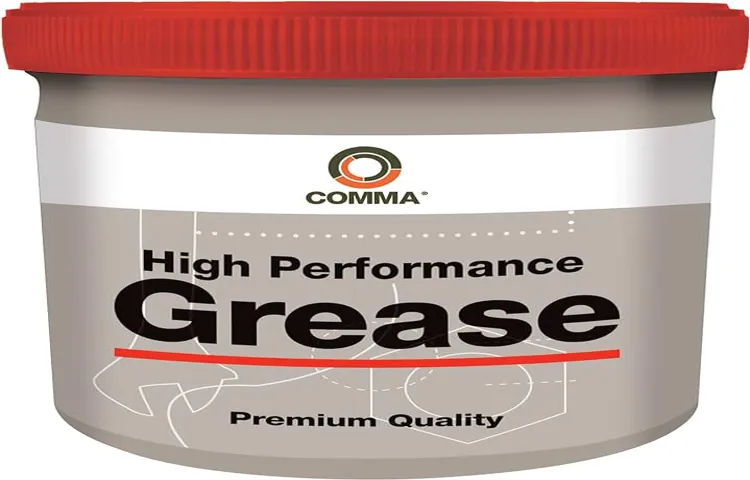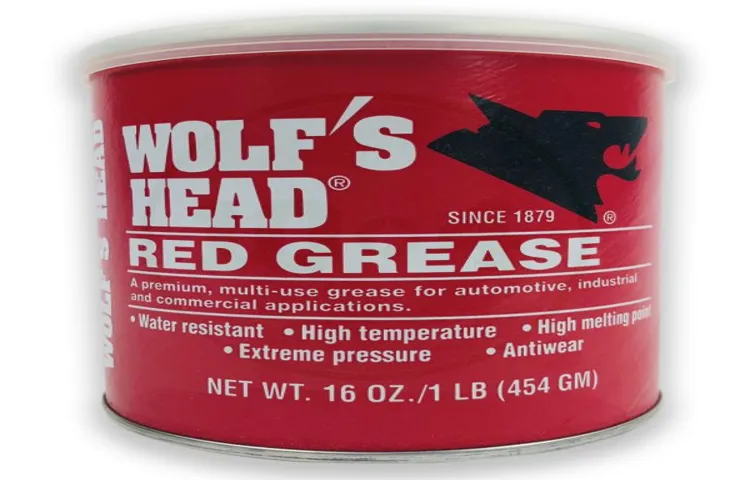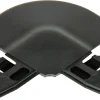Have you ever wondered how a tiny metal ball can make a machine run smoothly for years? The secret is a little thing called bearing grease. This simple yet effective lubricator is essential for keeping things moving smoothly and preventing wear and tear on your machines. In this blog, we’ll take a closer look at what bearing grease is, how it works, and why it’s so important for maintaining your equipment.
Whether you’re a mechanic, an engineer, or simply a curious DIYer, keep reading to learn everything you need to know about this unsung hero of the machinery world.
Table of Contents
Composition of Bearing Grease
Bearing grease is composed of several different materials that work together to keep bearings lubricated and functioning properly. The base of the grease is typically a mineral or synthetic oil, which provides the lubrication necessary to reduce friction and prevent wear on the bearings. To this base, a thickening agent such as a lithium or calcium soap is added.
These thickening agents help the grease maintain its consistency and adhere to surfaces, even at high temperatures and under heavy loads. Additional materials such as rust inhibitors, anti-oxidants, and anti-wear additives are often included to enhance the grease’s performance and lifespan. Overall, bearing grease is carefully formulated to provide optimal lubrication and protection for bearings in a variety of industrial, automotive, and marine applications.
Base Oil
Base oil is one of the essential components of bearing grease. It provides lubrication and reduces friction between the moving parts of bearings. Base oils are derived from various sources, including petroleum, synthetic compounds, and vegetable oils.
The type and quality of base oil used in bearing grease depends on the specific application and operating conditions. For example, high-temperature applications require base oils with a higher viscosity index, while low-temperature applications require oils with a low pour point. Additionally, additives are blended with base oils to improve their performance and extend the lifespan of bearings.
These additives can include anti-wear agents, corrosion inhibitors, and antioxidants. The proper selection and combination of base oils and additives are crucial for maximizing the efficiency and longevity of bearings.

Thickener
When it comes to bearing grease, it’s essential to understand its composition for proper usage. One of the main components of bearing grease is the thickener, a substance that thickens the lubricant and helps it stick to the surface it’s applied to. The most common type of thickener used in bearing grease is a soap compound made from fatty acids and a metal hydroxide.
This soap thickener makes up the majority of bearing grease and provides its characteristic texture. Other thickener types, such as polyurea and clay, are also used in specific applications. However, the soap thickener remains the most commonly used due to its cost-effectiveness and versatility.
When choosing the right bearing grease, it’s essential to consider the thickener composition, along with other factors such as viscosity, operating temperature, and load-carrying ability. By understanding the composition of bearing grease, you can choose the right product for maximum performance and protection of your equipment.
Additives
Bearing grease contains several components that work together to reduce friction and wear, prevent corrosion, and prolong the life of bearings. The base oil in greases is mostly mineral oil or synthetic oil, which provides lubrication. Thickening agents such as lithium, soap, or clay are added to the base oil to increase its viscosity and enhance its ability to adhere to surfaces.
However, additives make up a significant part of the grease composition, contributing to specific performance properties. Additives can include anti-wear agents, rust inhibitors, extreme pressure agents, and antioxidants, which protect bearings from stress, contamination, and oxidation. By carefully selecting the right base oil and additives, bearing grease can perform well under different conditions, temperatures, and speeds.
Overall, the composition of bearing grease is crucial to achieving optimal performance and reducing maintenance costs. Keyword: Bearing grease.
Functions of Bearing Grease
Bearing grease is a semi-solid lubricant that is used to reduce friction between moving parts in machinery. It is composed of a base oil, thickening agents, and additives. The base oil used in bearing grease can be mineral, synthetic, or vegetable-based, and the thickening agents are typically metallic soaps such as lithium, calcium, or aluminum.
These thickeners give the grease its semi-solid consistency and help it stay in place on the surfaces it lubricates. The additives used in bearing grease can vary depending on its intended application, but they typically include anti-wear agents, rust and corrosion inhibitors, and friction modifiers. Anti-wear agents help to prevent damage to the bearing surfaces, while rust and corrosion inhibitors protect exposed metal parts from moisture and oxidation.
Friction modifiers help to reduce the heat generated by moving parts and improve the overall efficiency of the system. Overall, bearing grease plays a critical role in maintaining the performance and longevity of mechanical components, and it is an essential component of many industrial and automotive applications.
Reduce Friction
Bearing grease plays an essential role in reducing friction and enhancing the performance of bearings. Its main function is to provide sufficient lubrication between the rolling elements of the bearing, mitigating friction, and preventing wear and tear. Bearing grease also helps in cooling and protecting the bearing from the External forces that can cause damage.
When choosing the right bearing grease, the viscosity of the grease, temperature, load conditions, and speed of the bearing must be considered. A good-quality bearing grease reduces maintenance costs and increases bearing lifespan. Think of it as a protective layer that helps to ensure that the bearing operates smoothly, without causing undue stress or damage.
Without bearing grease, bearings could easily overheat and fail, leading to a disaster. Therefore, selecting the right bearing grease is essential for proper bearing operation and reducing friction in any application, whether it’s in heavy machinery, automotive or industrial applications.
Prevent Corrosion
Bearing grease plays a crucial role in preventing corrosion and increasing the lifespan of bearings. It acts as a protective layer between the bearing and the outside environment, preventing moisture, dirt, and debris from entering and causing corrosion. The grease also helps to reduce friction and heat, which can cause premature wear and tear of the bearing.
Overall, the function of bearing grease is to ensure that the bearing operates smoothly and efficiently, without any damage or malfunction. Choosing the right type of bearing grease is important, as it should match the application and operating conditions of the bearing. With regular maintenance and appropriate lubrication, bearings can withstand harsh environments and operate at optimal performance levels for an extended period of time.
Trust me, your bearings will thank you for it!
Sealing
Sealing When it comes to the proper functioning of bearings, bearing grease plays an essential role. One of its primary functions is sealing. Grease helps to create a barrier between the bearing and the environment, preventing unwanted substances like dust, dirt, water, and other contaminants from entering and damaging the bearing.
In addition to sealing out unwanted contaminants, grease also helps to seal in the lubricant, preventing it from leaking out and lubricating the bearing effectively. Without a proper seal, bearings can wear out quickly, causing costly downtime and repairs. Therefore, selecting the right grease with the proper sealing properties is critical for ensuring long-lasting and efficient bearing operation.
By effectively sealing the bearing, grease helps to keep it running at optimal performance and reduces the risk of premature wear and tear.
Types of Bearing Grease
Bearing grease is a lubricating substance used to ensure that bearings function at optimum levels. It is made up of a combination of base oil, thickeners, and additives. The base oil is the most important element of bearing grease and is typically a mineral oil or synthetic oil.
Thickeners are used to give the grease its consistency, with the most common type being lithium-based. Additives are used to improve the grease’s properties, with commonly used additives including rust inhibitors, anti-wear agents, and extreme pressure agents. These additives help to protect the bearings against wear, corrosion, and high temperatures.
Ultimately, the type of bearing grease used depends on the application, with specific grease types being tailored to specific bearing types and temperatures. It is essential that the correct grease is used for each application to ensure that bearings operate at their best, making it important to understand what is bearing grease made of.
Calcium Grease
When it comes to lubricating bearings, there are various types of bearing grease that you can choose from, each with unique properties and applications. One popular type is calcium grease, which is formulated by adding calcium soap to mineral oil. Calcium grease is versatile and can be used in a broad range of temperatures and conditions, making it ideal for general-purpose lubrication.
It has excellent water resistance properties, making it suitable for applications where the bearing may be exposed to water or high humidity. Additionally, calcium grease offers good mechanical stability and has a high load-carrying capacity. It’s also a great choice for protecting against rust and corrosion.
Overall, calcium grease is an excellent choice if you’re looking for a reliable and versatile all-purpose lubricant for your bearings.
Lithium Grease
Lithium grease is a common lubricating product that works great with various machines and equipment. But there are different types of bearing grease available in the market, which will suit different types of machinery. One of the most popular types is general-purpose lithium grease, which offers excellent water resistance and high-temperature performance.
In contrast, high-temperature lithium grease is perfect for high-temperature applications and can withstand extreme heat conditions. Moreover, low-temperature lithium grease is a perfect option for machinery that operates under cold temperature conditions. It helps maintain the smooth functioning of equipment by reducing friction and wear and tear, extending the life of machinery.
Therefore, it is essential to select the right type of lithium grease based on the operating conditions and machinery type. By doing so, you can ensure the best possible performance of your equipment and machinery.
Polyurea Grease
Polyurea Grease When it comes to lubricating bearings, there is no “one size fits all” solution. There are various types of bearing grease, and each one has its own set of characteristics that makes it suitable for specific applications. One of the more specialized types is polyurea grease.
This type of lubricant is made from a synthetic base oil and a thickener that is a polyurea compound. Polyurea grease is known for its outstanding shear stability, water resistance, and ability to withstand high temperatures. It is commonly used in electric motor applications, paper mills, and high-speed machinery.
Additionally, it is ideal for bearings that are subjected to shock loads and high vibrations. Overall, polyurea grease should be considered when selecting a lubricant for bearings that require high-performance levels.
Conclusion
In conclusion, bearing grease may seem like a simple lubricant, but its composition is actually quite complex. It’s made up of a mixture of various oils, including mineral and synthetic oils, as well as thickeners like lithium and calcium soap, to give it the necessary consistency. In short, it’s like a recipe for the perfect cake – the right blend of ingredients creates a smooth and efficient performance for your bearings.
So next time you’re greasing up your bearings, remember that it’s not just a gooey substance, but a carefully crafted concoction designed to keep your wheels spinning smoothly.”
FAQs
What is bearing grease made of?
Bearing grease is typically made of a base oil mixed with a thickening agent, and often contains additives to improve performance and longevity. The base oil can be mineral oil, synthetic oil, or a combination of the two.
What are the benefits of using bearing grease?
Bearing grease provides excellent lubrication and protection against wear and corrosion in high-load and high-speed applications. It also seals out contaminants and prevents moisture from causing rust.
How often should you replace bearing grease?
The frequency of grease replacement depends on the operating conditions of the bearings. In general, it is recommended to regrease bearings every 6 to 12 months. However, in harsher environments or if there are signs of grease degradation, more frequent regreasing may be necessary.
Can you mix different types of bearing grease?
It is not recommended to mix different types of bearing grease, as they may have different chemical compositions and could react unfavorably. It is best to use the same type of grease that is already in the bearings or to clean and relubricate with a new type of grease.
How do you apply bearing grease?
Bearing grease should be applied evenly to the bearing surfaces, either by hand or with a grease gun. It’s important not to over-grease, as excess grease can cause overheating or leakage. Always refer to the manufacturer’s recommendations for the proper amount of grease to use.
What happens if you don’t use bearing grease?
Without proper lubrication, bearings can quickly wear out due to friction and heat. This can cause equipment failure and downtime, as well as safety hazards. Over time, the lack of lubrication can lead to permanent damage that may require costly repairs or replacement.
Can bearing grease be reused?
Generally, bearing grease should not be reused. Once it has been used and exposed to the operating conditions of the bearings, it can become contaminated with wear particles, moisture, and other contaminants that can affect its performance. It is best to dispose of used grease properly and use fresh grease for relubrication.



